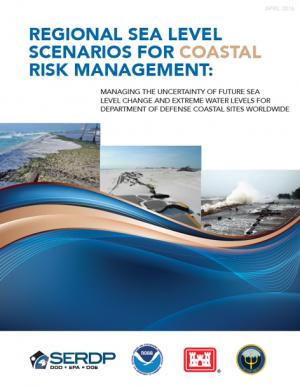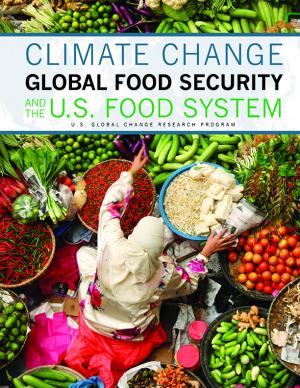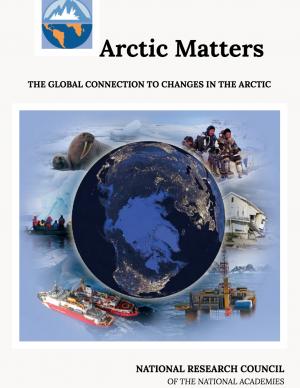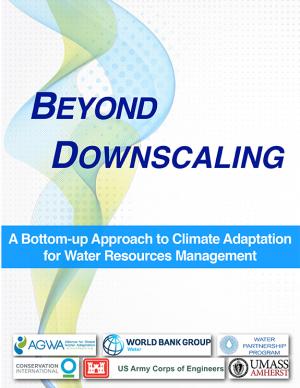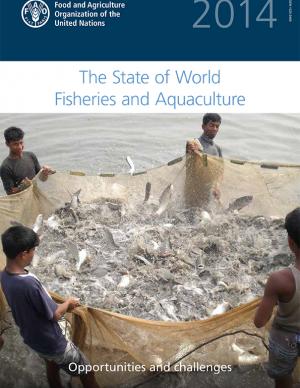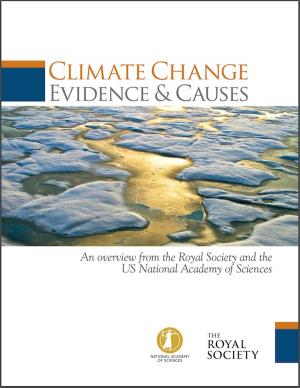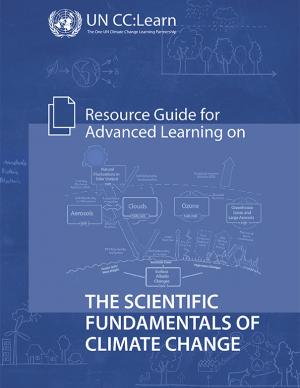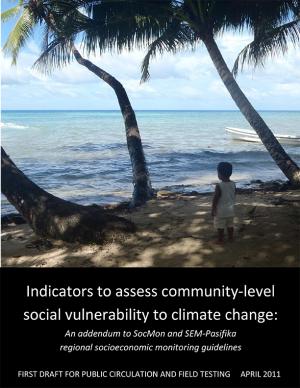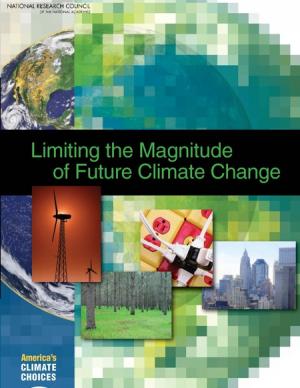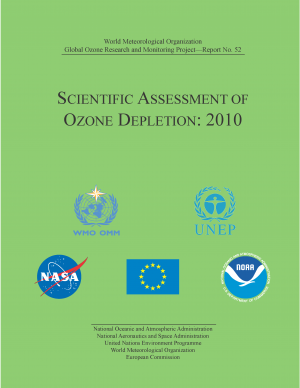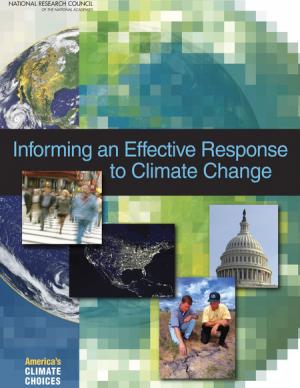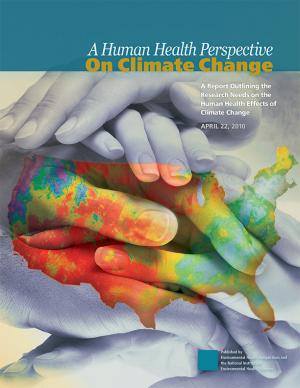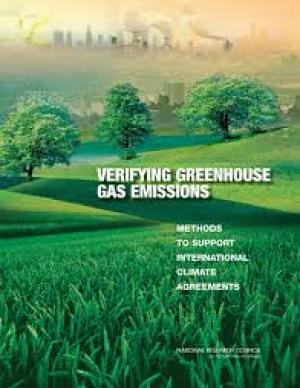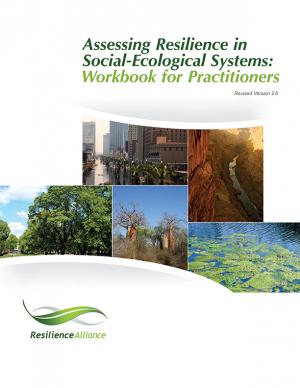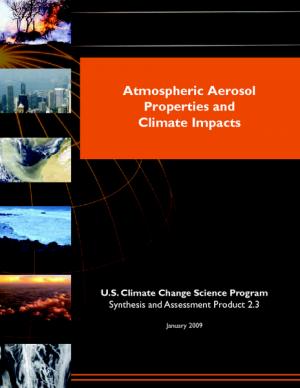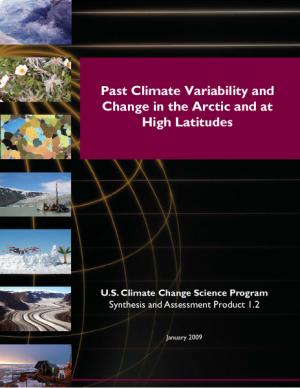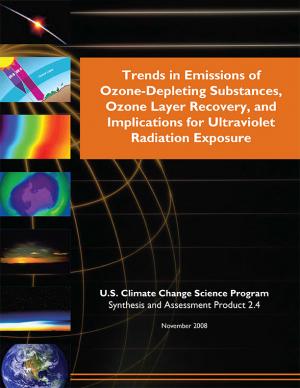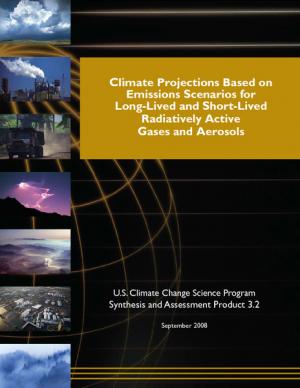Access a range of climate-related reports issued by government agencies and scientific organizations. Browse the reports listed below, or filter by scope, content, or focus in the boxes above. To expand your results, click the Clear Filters link.
A multi-agency team of researchers developed this Department of Defense report to provide regionalized sea level and extreme water level scenarios for the years 2035, 2065, and 2011 for 1,774 military sites worldwide. The information included in the report is meant to assist decision makers and others in making robust choices to manage their risk of future sea level and extreme water levels.
As climate has warmed over recent years, a new pattern of more frequent and more intense weather events has unfolded across the globe. Climate models simulate such changes in extreme events, and some of the reasons for the changes are well understood. Warming increases the likelihood of extremely hot days and nights, favors increased atmospheric moisture that may result in more frequent heavy rainfall and snowfall, and leads to evaporation that can exacerbate droughts.
Event attribution can answer questions about how much climate change influenced the probability or intensity of a specific type of weather event. As event attribution capabilities improve, they could help inform choices about assessing and managing risk, and in guiding climate adaptation strategies. This report examines the current state of science of extreme weather attribution, and identifies ways to move the science forward to improve attribution capabilities.
This peer-reviewed scientific assessment identifies climate change effects on global food security. Climate change is likely to diminish continued progress on global food security through production disruptions that lead to local availability limitations and price increases, interrupted transport conduits, and diminished food safety, among other causes. The assessment is a contribution to the U.S. National Climate Assessment, is called for under the President’s Climate Action Plan, and was led by the U.S. Department of Agriculture.
This report draws upon a large collection of peer-reviewed National Research Council reports and other national and international reports to provide a brief, reader-friendly primer on the complex ways in which the changes currently affecting the Arctic and its diverse people, resources, and environment can—in turn—affect the entire globe. Topics in the booklet include how climate changes currently underway in the Arctic are a driver for global sea level rise, new prospects for natural resource extraction, and rippling effects through the world's weather, climate, food supply, and economy.
Climate change adds uncertainty to already complex global water challenges. Though no standard method has been adopted yet by the World Bank, common practice uses downscaled precipitation and temperature projections from Global Climate Models (GCMs) as input to hydrologic models. While this has been useful in some applications, they often give too wide a dispersion of readings to provide useful guidance for site-specific water resources management and infrastructure planning and design. Rather than design for an uncertain situation selected a priori, the so-called “bottom-up” approaches explore the sensitivity of a chosen project to the effects of uncertainties caused by climate change. Supported by the Water Partnership Program, this book summarizes alternatives explored by a group of organizations that belong to the Alliance for Global Water Adaptation (AGWA), to provide practitioners with the tools to adapt to the realities of climate change by following a decision-making process that incorporates bottom-up thinking.
This Synthesis Report summarizes the Fifth Assessment Report (AR5) of the Intergovernmental Panel on Climate Change (IPCC). This report distills, synthesizes, and integrates the key findings of the three IPCC Working Group contributions—The Physical Science Basis; Impacts, Adaptation, and Vulnerability; and Mitigation of Climate Change—to the AR5 for the benefit of decision makers in government, the private sector, and the general public. The report also includes findings from two Special Reports released in 2011: Renewable Energy Sources and Climate Change Mitigation and Managing the Risks of Extreme Events and Disasters to Advance Climate Change Adaptation. The Synthesis Report confirms that climate change caused by human activities is having impacts on ecosystems and human well-being across the U.S. and around the world.
A 24-year tradition encompassing the work of 425 authors from 57 countries, 2013's State of the Climate report uses dozens of climate indicators to track patterns, changes, and trends of the global climate system.
This publication, known by the acronym SOFIA, is released every two years to provide policymakers and civil society with a global view of fisheries and aquaculture and associated policy issues. The 2014 report includes a special study of initial assessments of vulnerabilities to climate change in fisheries and aquaculture. The full archive is available online.
This report focuses on livestock diseases that are sensitive to climate change. The report aims to help practitioners reduce the risks of key climate-sensitive infectious diseases by strengthening risk management systems for disease outbreaks. The three diseases chosen for the study—Rift Valley fever, Bluetongue, and East Coast fever—spread through “vectors” such as insects and parasites, the prevalence of which fluctuates depending on key weather and climate variables such as temperature and humidity. As the symptoms of climate change continue, the frequency and extent of these diseases are expected to escalate.
Climate change is making the Arctic a greener, warmer, and increasingly accessible place for economic opportunity. However, climate impacts such as sea ice loss and rising ocean acidification are straining coastal community resilience and sound resource stewardship. NOAA's Arctic Action Plan outlines ways for scientists and stakeholders to share their progress regarding this vast, valuable, and vulnerable region.
This Fifth Assessment Report issued by the Intergovernmental Panel on Climate Change (IPCC) Working Group III is a comprehensive assessment by of all relevant options for mitigating climate change through limiting or preventing greenhouse gas emissions, as well as activities that remove them from the atmosphere.
The Intergovernmental Panel on Climate Change (IPCC) Working Group II's contribution to the Fifth Assessment Report (AR5) relates to climate impacts, adaptation, and vulnerability. A Summary for Policymakers and the underlying scientific and technical assessment are also available.
The dramatic impact of climate variability and climate change continued to be felt all over the world throughout 2013. The World Meteorological Organization statement on the status of the global climate in 2013 provides a snapshot of global and regional trends in weather and climate over the past year and highlights some of the year’s most significant extreme events.
This report uses a Question and Answer format to discuss climate change and its causes. The booklet provides an authoritative overview of global climate change for decision makers, policy makers, educators, and other individuals seeking information on climate science.
This report provides a risk-based approach to achieve resilient water security in a changing climate, documents key trends, and highlights best practice from the Organization for Economic Cooperation and Development (OECD) Survey of Policies on Water and Climate Change Adaptation. The report examines options to improve the flexibility of water governance, policy, and financing approaches.
This report, representing the Intergovernmental Panel on Climate Change (IPCC) Working Group I's contribution to the IPCC Fifth Assessment report (AR5), explores the hard science elements of global climate change.
This report summarizes the current state of knowledge on potential abrupt changes to the ocean, atmosphere, ecosystems, and high-latitude areas, and identifies key research and monitoring needs. The report calls for action to develop an abrupt change early warning system to help anticipate future abrupt changes and reduce their impacts.
These five Resource Guides facilitate access to existing climate change learning materials and support the development of complementary learning resources. The guides are compiled for selected topics of climate change for which a wealth of learning resources is available and that have been identified as important topics from a country perspective.
This summary report provides historical and projected estimates of emissions of non-carbon dioxide greenhouse gases (GHGs) from anthropogenic sources. The report provides a consistent and comprehensive estimate of non-CO2 greenhouse gases for 92 individual countries and eight regions. The analysis provides information that can be used to understand national contributions of GHG emissions, historical progress on reductions, and mitigation opportunities. The projections represent a business-as-usual scenario that includes reductions from established sector-specific programs but not economy-wide programs or commitments.
This guide is targeted towards program managers who work in climate change and health adaptation, and provides them with practical information and concrete guidance to mainstream gender throughout all four phases of the project cycle: identification, formulation and design, implementation, and monitoring and evaluation.
This report is the product of collaboration between the World Health Organization and the World Meteorological Organization, and aims to provide sound scientific information on the connections between weather and climate and major health challenges.
Extreme weather and climate events, interacting with exposed and vulnerable human and natural systems, can lead to disasters. This Special Report explores the challenge of understanding and managing the risks of climate extremes to advance climate change adaptation. Some types of extreme weather and climate events have increased in frequency or magnitude, but populations and assets at risk have also increased, with consequences for disaster risk. Opportunities for managing risks of weather- and climate-related disasters exist or can be developed at any scale, local to international.
This special report assesses the scientific literature on the potential role of renewable energy in the mitigation of climate change for policymakers, the private sector, academic researchers, and civil society. It covers six renewable energy sources—bioenergy, direct solar energy, geothermal energy, hydropower, ocean energy and wind energy—as well as their integration into present and future energy systems. It considers the environmental and social consequences associated with the deployment of these technologies, and presents strategies to overcome technical as well as non-technical obstacles to their application and diffusion.
The purpose of this guide—an addendum to regional socioeconomic monitoring guidelines produced by the Global Socioeconomic Monitoring Initiative for Coastal Management (SocMon) and its Pacific counterpart, SEM‐Pasifika—is to provide a minimum set of socioeconomic indicators related to climate change. The aim of these programs is to improve site management of coastal and marine areas by providing simple, user‐friendly guidelines on how to conduct a socioeconomic assessment, which helps coastal managers incorporate community views into adaptive management of marine resources.
Meeting internationally discussed targets for limiting atmospheric greenhouse gas concentrations and associated increases in global average temperatures will require a major departure from business as usual in how the world uses and produces energy. This report from the America’s Climate Choices suite of studies by the National Research Council recommends that a U.S. policy goal be stated in terms of a budget for cumulative greenhouse gas emissions over the period 2012 to 2050.
This assessment of ozone depletion, produced by the World Meteorological Organization and the United Nations Environment Programme every four years since 1985, is the work of over 300 scientists. The 2010 report highlights advances in the understanding of the role greenhouse gases play in ozone alteration. It also includes updated information for policymakers, including ozone projections for the 21st century.
This report quantifies the outcomes of different stabilization targets for greenhouse gas concentrations using analyses and information drawn from the scientific literature. Although it does not recommend or justify any particular stabilization target, it does provide important scientific insights about the relationships among emissions, greenhouse gas concentrations, temperatures, and impacts. The report emphasizes the importance of 21st century choices regarding long-term climate stabilization, and is a useful resource for scientists, educators, and policy makers, among others.
This volume in the National Research Council's America's Climate Choices series describes and assesses different activities, products, strategies, and tools for informing decision makers about climate change, including education and communication, and information systems and services for helping them plan and execute effective, integrated responses. Information and reporting systems discussed include climate services and a greenhouse-gas accounting system.
This report, by a federal working group led by the National Institute of Environmental Health Sciences, highlights 11 key categories of diseases and other health consequences that are occurring or will occur due to climate change. The report provides a starting point for coordination of federal research to better understand climate’s impact on human health. The recommendations of the working group include research to identify who will be most vulnerable, and what efforts will be most beneficial.
Agreements to limit emissions of greenhouse gases are the focus of international negotiations, and with such accords will come the need to accurately estimate these emissions, monitor their changes over time, and verify them with independent data. This report identifies strategic investments that could be made to both improve self-reporting and yield a capability to verify these estimates and reduce uncertainties about emissions to less than 10 percent.
The workbook for practitioners uses strategic questions and activities to assess resilience in social-ecological systems. The approach involves constructing a conceptual model of a system that includes resources, stakeholders, and institutions, and identifies potential thresholds between alternative systems states in order to provide insight into factors that build or erode a system's resilience. A resilience assessment can help with developing strategies for coping with uncertainty and change.
A tutorial for the climate analysis and decision-making communities on current best practices in describing and analyzing uncertainty in climate-related problems. Uncertainty is ubiquitous. Of course, the presence of uncertainty does not mean that people cannot act.
This Synthesis and Assessment Product (SAP), developed as part of the U.S. Climate Change Science Program, offers a detailed look at global distributions and properties of airborne particles known as "aerosols." The report examines the various ways in which aerosols influence climate, and the uncertainties in our ability to observe and measure these particles' impact on the climate system.
Average temperatures in the Arctic have increased at almost twice the rate of the planet as a whole. Such temperature changes have been accompanied by shrinking sea ice, melting ice and permafrost on land, and widespread impacts to land and ocean ecosystems. This Synthesis and Assessment Product, developed as part of the U.S. Climate Change Science Program, offers recommendations for future research in this area.
This Synthesis and Assessment Product, developed as part of the U.S. Climate Change Science Program, integrates knowledge of the stratospheric ozone layer, human-emitted ozone-depleting substances, and the amount of harmful ultraviolet radiation reaching Earth's surface.
This Synthesis and Assessment Product, developed as part of the U.S. Climate Change Science Program, is an assessment of the effects of short-lived gases and particles in the atmosphere, which can significantly change regional surface temperatures. By the year 2100, short-lived gases and particles may account for as much as 40 percent of the warming over the continental U.S. in summertime.

